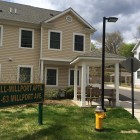Animal 411
‘We Felt That It Was Not Humane’: Housing Authority Rescinds ‘Declawing’ Requirement for Residents’ Cats
|
Responding to concerns from animal welfare advocates, officials from the New Canaan Housing Authority say they’re moving away from a requirement that residents of affordable rental units at Millport Avenue have their cats “declawed.”
Banned in many countries, declawing typically involves amputating the last bone of each toe on a cat—the equivalent of cutting off each finger at the last knuckle on a person, according to the Humane Society of the United States. As detailed within an otherwise standard “Pet Addendum” to lease agreements that had been inherited by Stamford-based property manager WinnResidential, the rule required that “cats must be de-clawed and written proof of de-clawing is required.”
When New Canaan-based nonprofit rescue group Strays & Others learned of the policy, representatives reached out to WinnResidential as well as the Housing Authority’s commissioners—and got an immediate and decisive response. “We were so pleased to hear that the Housing Authority rescinded the policy for the management company, asking that their residents’ cats be declawed,” Strays & Others President Claudia Weber said. “It was the right thing to do.”
The declawing requirement had been a carryover from the Millport Apartments’ prior property manager, officials said. It isn’t clear exactly how many cats were declawed as a result of the policy, but it’s been rescinded effective immediately, according to commissioner Bernard Simpkin.




